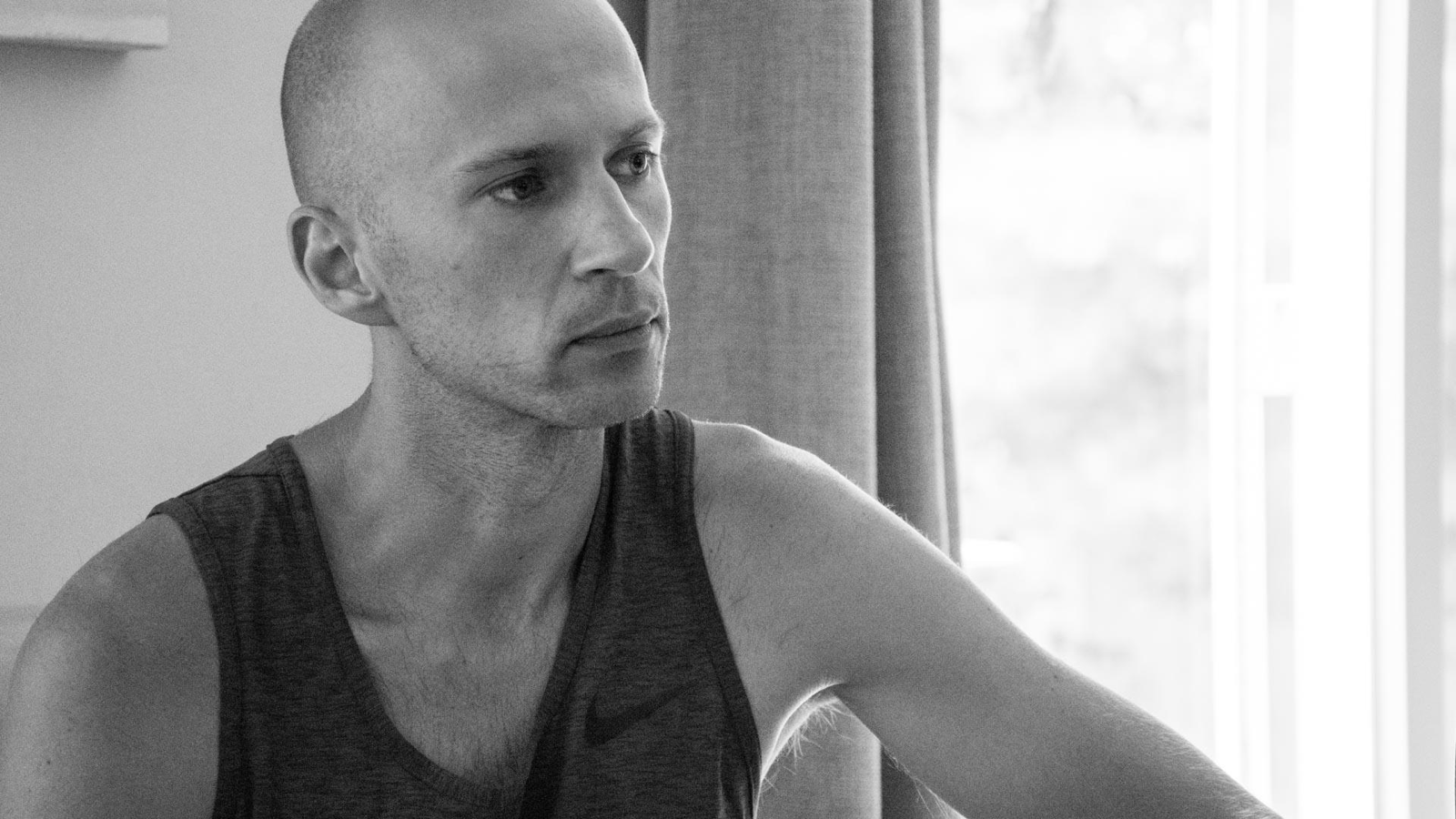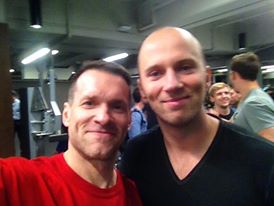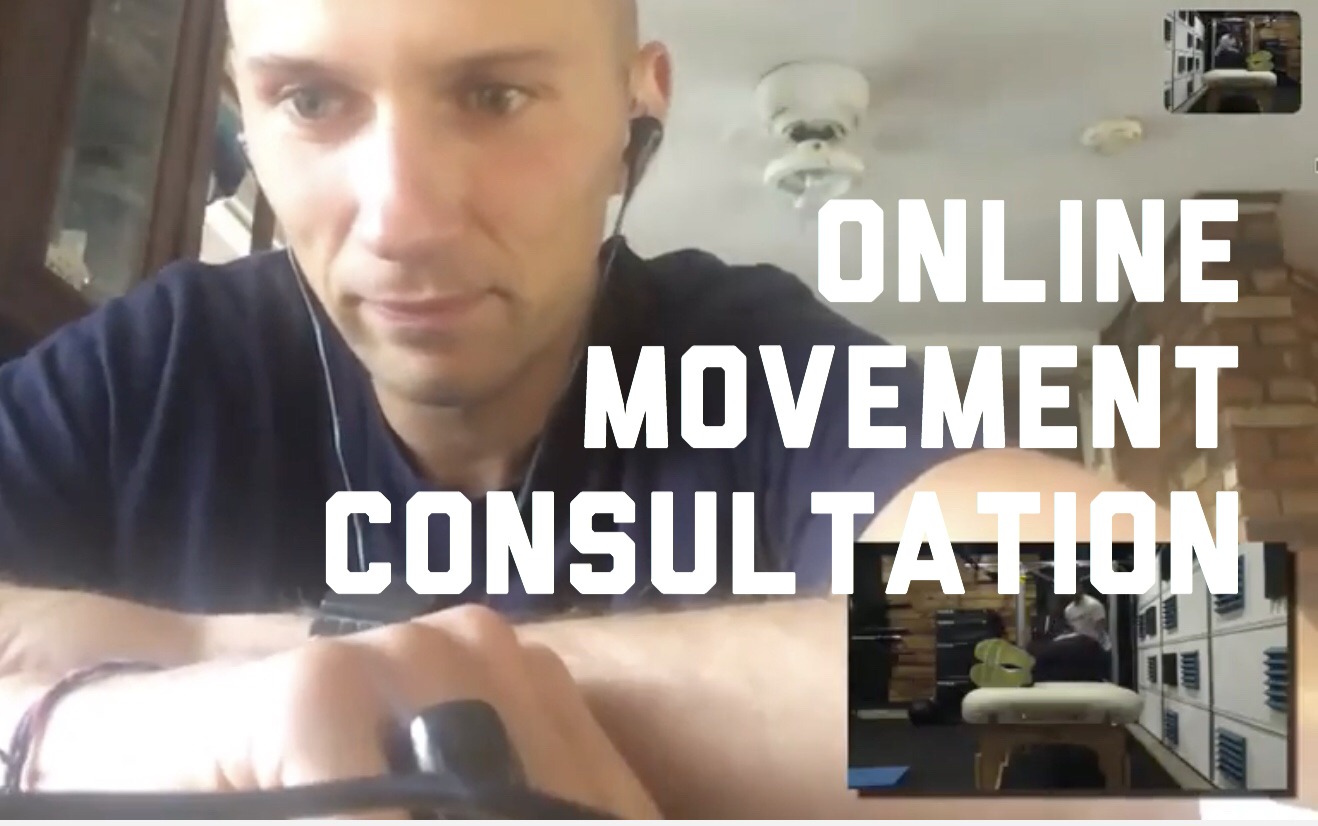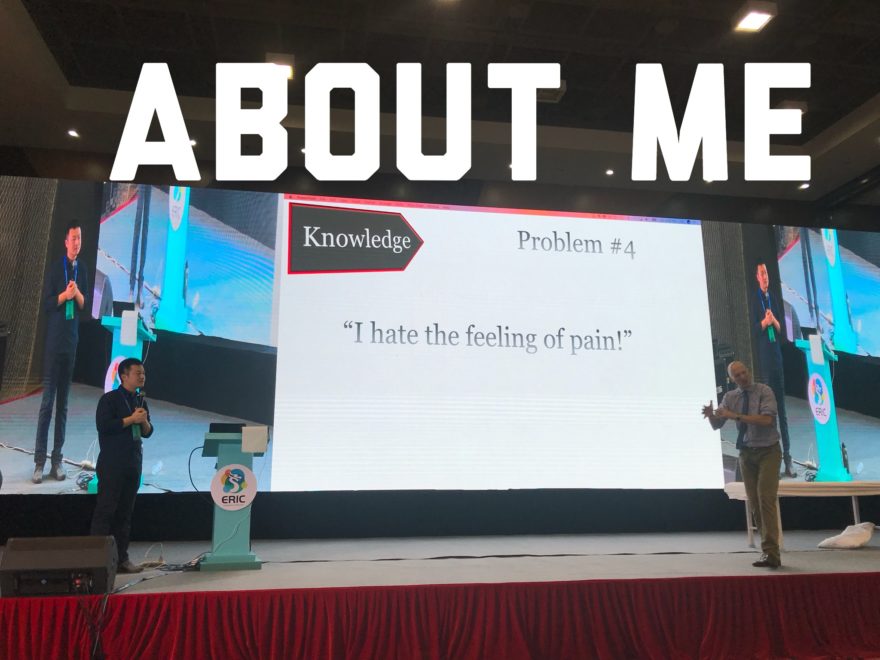Without my mentors, I would be nothing
Studying my craft never came easy to me.

I had to work incredibly hard to learn many scientific concepts in college, with varied successes and failures. Despite continual review, much of the information didn’t stick.
Although I had a knack for orthopedic physical therapy, I wasn’t seeing the results I had hoped for during my clinical rotations. I felt inept, out of place, and lost.
That all changed in Indianapolis.
There I met one of my greatest mentors, Bill Hartman. He helped build my confidence as a clinician, taught me the basic sciences and rehabilitation in an easy-to-learn manner, and gave me outside-the-box solutions to help my patients.

What was most admirable was his discipline and continual desire to learn. These were the most important things I left with.
It is people like Bill and the people we work with that continue driving me to get better. That drove me to attend over 70 continuing education courses my first five years out of school. Inspired me to better my understanding through writing, speaking, and teaching. To put myself in uncomfortable situations so I can grow.
That pushes me to becoming the best me.

This website is a product of that goal. As a physical therapist and strength coach, I have many clinicians and coaches who reach out to me, yearning for a mentor. Someone to hold them accountable. Someone that they can learn from. Someone that has made the mistakes already.
It is my hope to be that for you. Regardless of if you are a clinician, coach, or enthusiast, I’m here to help you reach your goals. I want you to learn through my failures and successes so the journey is accelerated.
The journey to becoming the best you.
My Credentials
Sure, I have a story that drives me, but who the hell am I right?
I graduated from St. Ambrose University Doctor of Physical therapy program in 2011, completed an orthopedic residency in 2013 to attain my OCS, became a certified strength and conditioning coach that same year (CSCS), and have spent a bulk of my career studying and becoming certified in various lines of thought (Postural Restoration, FMS, SFMA, Dry Needling, Precision Nutrition, Certified Speed and Agility Coach, and many more).

It is my obsession to find as many different methods as possible to help the people who I work with, and that is where my education for the future shall focus on.
Helping You Become the Best You
Here is what I can do to help you reach your goals.
Blog Posts
Drawing from my eclectic experiences—an NBA Therapist, a D League Strength Coach, a traveling PT, a clinic director, a continuing education reviewer—I write about all things that help our clients meet their health and performance goals: rehab, training, nutrition, sports science, sleep, stress management, and the learning process.
Online Services
I have yet to write what you are looking for? No problem. Reach out to me about personal mentoring and I can better explain concepts you may have trouble understanding.
Or maybe you are here because you are in pain, having trouble moving, or simply want to get in better shape. Talk to me about a movement consultation or online training. I’ll help you achieve your performance goals.
Or if you are a trainer in need of a PT, we can work together to help get your clients moving the way they so desire.

Videos
I have several videos demonstrating various techniques, exercises, and concepts to help enhance your learning.
Notes
I’ve taken a lot of continuing education and read many books over the years. Maybe you are diving into those subjects as well. Check out my course notes and book notes to help get the most out of what you are learning. They’re like Sparknotes, only nerdier.
See what others are saying
At IFAST, we’re serious about blending therapy and performance.
Our entire model revolves around taking athletes that are potentially broken, and restoring them not only to their sport, but bringing them back better than ever.
Zac Cupples has spent time in the trenches, both at IFAST as well as at the NBA level. This is a guy that understands the training continuum, and how to help athletes restore their athleticism and perform at the highest levels.
If you’re serious about taking your skills as a trainer or coach to the next level, then definitely spend more time with my guy ZCupps.
You won’t be disappointed!
– Mike Robertson, co-owner of Indianapolis Fitness and Sports Training
Zac is somebody to whom I frequently turn to audit my understanding of acute injury mechanisms, high performance, and everything in between.
His grasp of both research and clinical application distinguishes him as a global thinker and unbiased expert in his field. Zac’s written and practical content is unique for its simultaneous depth and clarity.
-Doug Kechijian, PT, DPT, Co-Founder Resilient Performance Physical Therapy
Talk to me
Fill out the form below. if you have any questions, comments, concerns, or complaints.
Because of the overwhelming amount of emails I’ve received. I may not be able to respond to your email in a timely manner, or at all. If you want the best chance of a response, please keep your question brief enough that I have time to read it. My general rule of thumb is if I can answer it in 90s or less, I will answer on the spot. If it’s more in depth, I’ll add it to my list of blog posts or debrief questions.
I’m also fairly active on social media, so please check me out there.
Look forward to learning with you.
Disclaimer: This blog is for general informational purposes only and is not a substitute for professional medical advice. Thoughts are my own.
We are a participant in the Amazon Services LLC Associates Program, an affiliate advertising program designed to provide a means for us to earn fees by linking to Amazon.com and affiliated sites.
Photo courtesy of Lance Goyke


Just curious how you manage to do so much continuing education? Do you teach at these seminars or just shell out the cash for the seminars? Does your company cover it all?
My company doesn’t cover it all, but I am fortunate that they do quite a bit. Otherwise, I budget out of my current expenses, know some of the right people, and work a lot. It’s an investment.
Hi Zac-one of my colleagues forwarded your website to me! You have a wonderful writing style and great sense of humor. I enjoyed reading your take on the NYC course we were at together. Also, my colleague has been sharing your myokin notes with those who are taking PRI course for the first time (I am hosting this weekend in Boston). Remember your first PRI course??
Glad you enjoy Donna and appreciate the sharing going around.
Can never forget hearing Cantrell Respiration 2 years ago 🙂
Hi Zac. Thanks for maintaining this interesting site. Just wondering if you have ever come across a neural mobilization technique for the dorsal branch of the ulnar nerve? As far as I can tell the NOI techniques for the ulnar nerve address the volar branch only. Thanks, Nick.
Hey Nick,
It’s great to hear from you.
I unfortunately have not seen a mobilization techniuqe for the dorsal branch.
Based on the anatomy of it, I would think the only difference would be at the wrist. To maximally elongate the nerve, you would flex the wrist as opposed to extending. Nothing else should be different at the other joints.
Great question, making me think tonight hahaha.
Zac
Hey Zac, did you do your residency at IFAST under Bill? Or did you do it elsewhere and then worked under Bill afterwards? I’m gathering information on whether it is worth it to attend residency as opposed to paying off loans and trying to self-learn once I graduate.
Thanks,
Andy
Hey Andy,
Great to hear from you.
I did one of my clinicals with Bill (I wish a residency). My residency was with my alma mater St. Ambrose University.
While I learned a fair amount with the residency, I would recommend the self-learning route. You have more independence in what you can learn that way and are not forced things that aren’t necessarily that good.
Stay in touch,
Zac
Hey Zac,
I will definitely keep in touch. You’re really an inspiration for the field and for a student like me looking to excel in the the field of movement. The notes and overviews you put out are really helpful and inspiring. I’ll definitely be keeping up with you and your work!
Andy
Thank you for the great content.
Thank you for the kind words and reading. Glad you enjoy!
Zac
Good looking website and youtube channel. I’m looking forward to reading through the posts. And nice to run into you online after meeting in person.
Hi Zac, I am a 27 year old ex female professional bodybuilder and powerlifter from Germany who has had a very long history of SI joint problems due to a very severe injury which took place 5 years ago. On my journey to recovery I have come across PRI and I have learned the method (not certified though). I have been trying to apply PRI principles to my injury but I don’t seem to be successful because it’s not a classic L AIC pattern. Five years ago I managed to dislocate my left ilium while doing a very heavy deadlift with mixed grip (spine was rotated during the lifting). I heard suddenly a very loud popping sound coming from my left SI joint, I immediately fell off the floor and I couldn’t get back up for at least 2 weeks. With time my body shifted toward the right side and the entire spine got twisted in an attempt to compensate for the dislocation that went on untreated 4 years. No doctor was able to figure out what was going on. Imaging tests showed nothing except inflamation of the left SI joint. I now know that the ilium has moved forward at the moment of the injury but that is not the only thing that happened. My sacrospinous ligament got injured which resulted in more than a left AIC pattern. The ilium on the left is also in a very abducted position. What I have also found to be strange is that both my abduction and adduction are limited on my left side. So ADT, PADT and PART are positive on both sides but more on the left and if I do the Patho PEC programm and than L AIC programm the tests improve a little bit but they never go negative. I am trying to figure out how to use PRI principles on this injury to pull the bones back and establish ligamentous muscle for sacrospinous ligament, as I have noticed that using PRI corrections approximates the bones again. By turning the left posterior outlet on (coccygeus, piriformis and glut. max.) it doesn’t feel good as my body goes into a complete state of dizziness and weakness. My spine does come to neutral but it doesn’t stay and I get very strong neurological reactions from it. By doing the L AIC programm my body locks up fully and all tests go positive and I am not able to breathe at all. I am also not willing to go through SI joint fusion surgery which is my only option according to my doctors. Do you have any idea what muscle algorithm would apply to this? Thanks in advance, Mihaela
Hey Mihaela,
Sorry you are having so much trouble and for all that you’ve been through.
If you are positive adduction drop on both sides, then in theory a patho pec program would be indicated. Would consider some of the activities I listed in the pelvis restoration posts i’ve done. I would ensure that you have abs/ZOA effectively before moving to a posterior outlet activity.
https://zaccupples.com/2014/01/23/course-notes-pri-pelvis-restoration/
https://zaccupples.com/2015/04/06/course-notes-pelvis-restoration-reflections/
That being said, it is really hard to say exactly what you need without an assessment. I do movement consultations in which I could possibly give you some more guidance. You can check that out here: https://zaccupples.com/services/
Hope this helps,
Zac
Hi Zac,
I’ve been following your blog posts for while now and I’m on your email list. I just wanted to say that I appreciate all the great information along with the humor in your writings, which makes it very fun to read as well. I’ve learned so much from the content in your website. You were the first person I found online who mentioned PRI treatments a few years ago. I’ve also been on the PRI website occasionally in the past.
I recently took a course that incorporated PRI and DNS techniques specifically for baseball rehab. I was able to use the PRI techniques with dramatic improvements with the patients I treated the following day of work. But again, it didn’t work for every patient and I know there’s much more to learn, so I’m just scratching the surface with incorporating PRI into my practice. I was wondering what your thoughts are about what sequence of courses to take for PRI primary courses? Which one would you take first, second, etc. if you look back and can start over with PRI from the beginning?
Thank you
Sung,
Thank you so much for commenting, reaching out, and your kind words. I appreciate having you on board 🙂
Though I think much of the material can be sought after from primary sources and many others (Zink, Dunnington stress pattern, etc), PRI does well synthesizing many of these common asymmetrical patterns. I’d go with myokin–>postural–>pelvis–>impingement and call it a day. Advanced Integration was a good overview as well, but the course content may have changed since I’ve last taken the class.
Hope this helps,
Zac
Zac, I always enjoy your content. I’d like to better understand the infrasternal angle concepts…….any chance you’ll write a blog post on it to complement your discussions on the Movement Debriefs.
Thanks,
Brad Runia
Hey Brad,
Great suggestion. I was going to do this at some point. I’ll consider your comment impetus to get this done sooner!
Z
Zac, happy new year. You mention that with limited HG IR the muscles on the front are tight or concentrically oriantated then to live the body compensates by ER humerus. Would you say that the humerus ER compensation is mostly from the subscapularis?